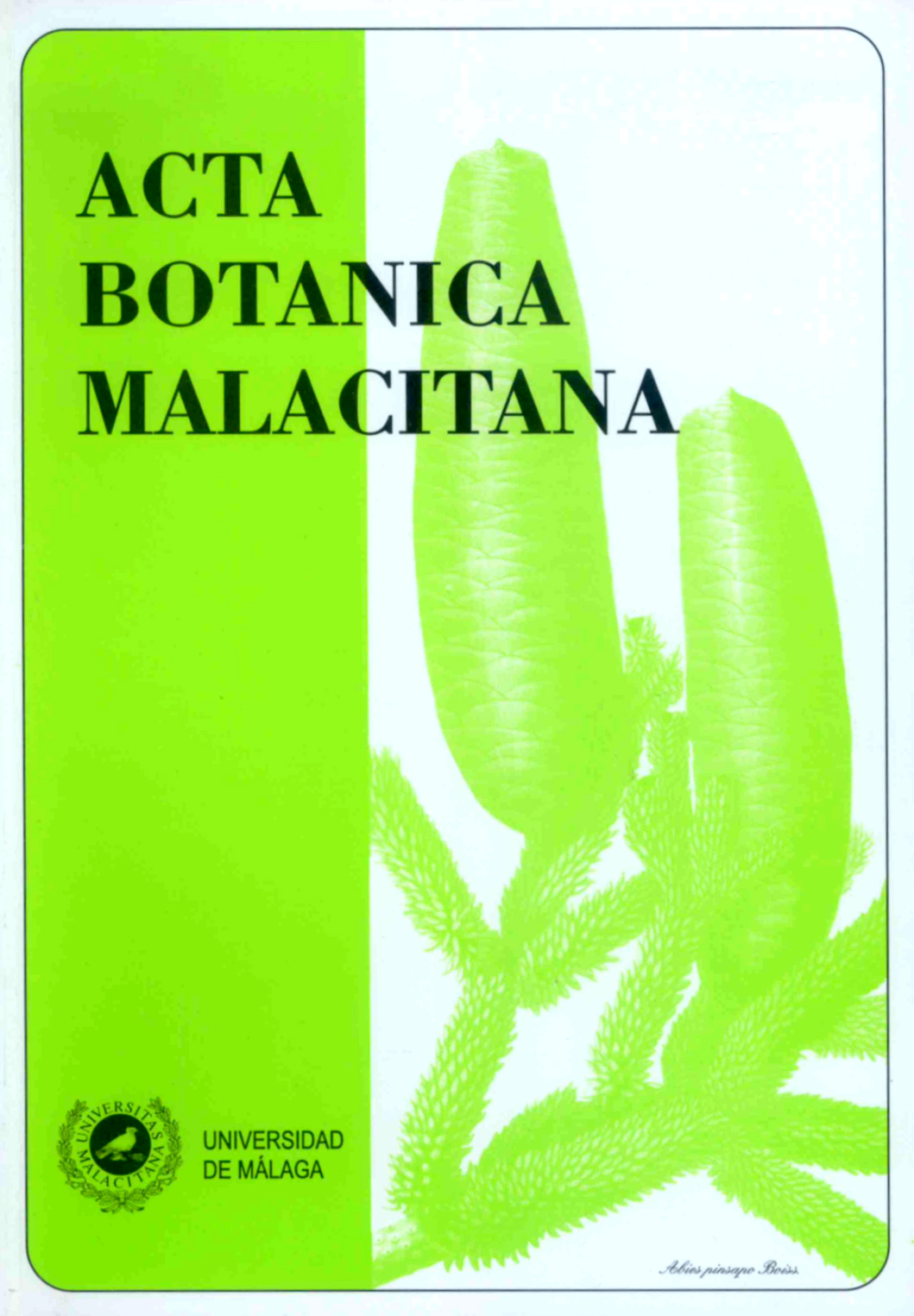Estudio del polen atmosférico y su relación con la vegetación local. La Plata, Argentina.
DOI:
https://doi.org/10.24310/abm.v34i0.6938Resumen
RESUMEN. Estudio del polen atmosférico y su relación con la vegetación local. La Plata, Argentina. Se analizó el registro de polen en la atmósfera de la ciudad de La Plata (34° 55 ?S, 57° 57 ?W°) y su relación con la vegetación arbórea del área. La toma de muestras polínicas se llevó a cabo con un captador tipo Hirst (Lanzoni VPPS 2000) y se censó la vegetación arbórea de 1km2. El 99% del polen determinado se correspondió con fuentes emisoras locales. El 53% de los taxa no estuvo representado en el registro dado, principalmente por su polinización entomófila. Se registró polen extralocal y, en menor escala, polen regional y extraregional. El índice de Representatividad de los 24 taxa expresados en el registro polínico permitió reagruparlos en las categorías, Subrepresentados a Aesculus hippocastanum L., Tilia moltkey L., Jacaranda mimosifolia D. Don., Robinia pseudoacacia L., Persea americana Mill., Ligustrum lucidum Aiton, Cedrus sp.pl. D.Don, Betula pendula Roth, Liquidambar styraciflua L., Ulmus sp.pl. L., Pinus sp.pl. L., Alnus acuminata Humb., Juglans sp. L., Populus deltoides L., Acer negundo L., Phoenix sp. Hort ex Chabaud., Fraxinus sp.pl. Tourn ex L. y Salix humboltiana L. Equirepresentados a Celtis sp. L., Morus sp. L. y Quercus sp. L. y Sobrerepresentados a Platanus sp. Mill. ex-Muenchh, Ricinus sp. L. y Cupressaceae Rico. ex-Bartl. El análisis polínico resulta adecuado principalmente para caracterizar a las especies de polinización anemófila del área, pero no siempre es representativo de la contribución de especies de polinización entomófila.
Palabras clave. Polen, atmósfera, vegetación urbana, La Plata, Argentina
ABSTRACT. Study of atmospheric pollen and its relationship with the local vegetation. La Plata, Argentina. The pollen record in the atmosphere of the City of La Plata (34° 55 ?S, 57° 57 ?W) and its relationship with the arboreal vegetation in the area was analyzed. Sampling was carried out with a Hirst-type spore trap (Lanzoni VPPS 2000) and a census of the trees in 1 km2 was taked. 99% of the identified pollen corresponded to local emission sources. 53% of taxa was not represented in the record due mainly to entomophilous pollination. Extralocal pollen and, in a lesser extent, regional and extraregional pollen was registered. The Index of Representativeness of the 24 taxa expressed in the pollen record allowed to regroup them in 3 categories. Subrepresented: Aesculus hippocastanum L., Tilia moltkey L., Jacaranda mimosifolia D. Don., Robinia pseudoacacia L., Persea americana Mill., Ligustrum lucidum Aiton, Cedrus sp.pl. D.Don, Betula pendula Roth, Liquidambar styraciflua L., Ulmus sp. pl. L., Pinus sp.pl. L., Alnus acuminata Humb., Juglans sp. L., Populus deltoides L. , Acer negundo L., Phoenix sp. Hort ex Chabaud., Fraxinus sp.pl. Tourn ex L. and Salix humboltiana L. Equirepresented to Celtis sp. L., Morus sp. L. and Quercus sp. L. and Overrepresented:190D. S. Nitiu Platanus sp. Mill. ex-Muenchh, Ricinus sp. L. and Cupressaceae Rico. ex-Bartl. Pollen analysis is appropriate to characterize anemophilous species in the area, what not always is representative of the contribution of entomophilous pollinated species.
Descargas
Métricas
Descargas
Publicado
Cómo citar
Número
Sección
Licencia
Toda la información relacionada con la licencia de uso de los trabajos publicados en Acta Botanica Malacitana y con los derechos de autor se pueden consultar en nuestra Política Editorial.








1.png)


